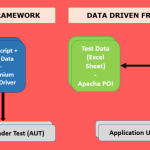
Data Warehouse
In today’s business environment and data-driven world, organizations have a lot more data than ever before. This huge collection of data enhances the performance of organizations by creating a foundation for important business decisions.
The data warehouse is used as a central repository to make reporting and data analytics easier. In this article, we will learn about data warehouses and explore their architecture, benefits, and applications.
Content
What is a Data Warehouse?
A data warehouse often abbreviated as DW or DWH is an organization’s central repository of data that is extracted from diversified sources. These sources can be relational databases, external sources, etc.
It’s a single repository consisting of historical and highly-structured data which is integrated to support Business Intelligence(BI), Data Analysis, Artificial Intelligence(AI) and to make informed decisions thus boosting an organization’s performance. Data warehouse is not just a product but the whole environment.
Earlier data warehouses were used to store data in relational databases and the data were transformed using classical ETL( Extract, Transform and Load).
But with the evolving technologies, now data warehouses use cloud architectures to collect, analyze and report thus shifting from the traditional ETL method to Extract, Load, and Transform(ELT), API and streaming.
Characteristics Of Data Warehouse
There are four characteristics of a data warehouse-
- Subject Oriented – A data warehouse is said to be subject-oriented when it provides data regarding a certain topic or theme i.e. sales, inventory, customer data, etc. rather than business ongoing operations.
Subject Oriented data warehouse provides a short and simple view of the concerned subject so that it is easily understandable by the user and excludes the other data or information that is not required for decision making.
- Integrated – As discussed above, a data warehouse consists of data from different sources. Integration means a collection of similar data for establishing a shared entity that is universally accepted and that can be used for the effective analysis of data.
- Time-Variant – The data warehouse has an important property of holding historical data over a given period such as weekly, monthly, and annually. The various time limits are found in the large data sets and are held in OLTP (Online Transaction Process).
A record key displays time variance and the primary key contains data warehouse elements of time implicitly or explicitly. Also once the data is inserted in DW it can’t be altered.
- Non-Volatile – The data stored in the data warehouse is non-volatile. i.e whenever new data is entered previous data is not erased or deleted from the storage. Data here is in read-only mode and can be updated regularly which helps in analyzing what happened and when.
Various functionalities such that insert, delete and update are omitted in DW. And hosts only two functions-
- Data excess
- Data loading
Architecture Of Data Warehouse
The architecture of a data warehouse is complex and refers to the way the data framework and storage collection functions. There are three layers of a data house-
- Single Tier – It minimizes the data storage and makes it compact intending to remove unnecessary data elements.
- Two Tier – This layer separates physically available storage and data warehouses. This architecture is not used as it is not expandable and supports limited numbers of end-users.
- Three Tier – This tier is most widely used as it is user-friendly and creates the structural flow of insights. It consists of three layers.
- Bottom Tier – The DW database server acts as the bottom tier where several back-end tools are used to clean, transform and load data into this layer. For example, ODBC(Open Database Connection), JDBC(Java Database Connection).
- Middle Tier – The middle tier consists of an OLAP (Online Analytical Processing) server which acts as an interface between the end-users and the database. This layer gives an abstract view of the database and represents a multidimensional database with the help of ROLAP (Relational Online Analytical Processing) and MOLAP (Multidimensional Online Analytical Processing).
- Top Tier – The top tier encompasses the front-end client interface and consists of various tools that are used by various developers or data engineers to extract the data from the data warehouse. The tools include Analysis tools, Data mining tools, etc.
Need of Data Warehouse
There are various reasons for the need for Data Warehouses.
- Security – It provides a secure gateway for accessing the one who has a legitimate need and excluding the other.
- Faster Response – DW provides flexibility and runs a quick analysis on various types of queries and unexpected load.
- Data Understandability – Various people working as business analysts are non -technical, a data warehouse helps them in retrieving the data in a summarized and elementary fashion.
- Historic Data – A data warehouse contains historical data and continues to update it without deleting the old data.
- The Data warehouse serves as a single set of all data within the company.
Advantages of Data Warehousing
- Competitive Advantage – The DW brings a competitive advantage to an organization as it allows businesses to access the data effectively and quickly to create an improved decision to create more sales, target more customers, etc. Thus, overall helping in quick decision making.
- Cost-Effective – as it allows storage of heterogeneous data in a single place and reduces the need for IT support.
- Analyzing Trends – Data warehouse helps to analyze the trends quickly and effectively thus boosting an organization’s performance which leads to an increase in productivity.
- Better Analytics – With the help of better business intelligence tools, a centralized repository data warehouse generates the reports and insight quickly.
- Operates as On-Premise and Cloud – With modern-day technologies, data warehouses are built with multi-cloud and hybrid cloud structures. Many data warehouses are premise built and a p[art of them is integrated into the cloud helping the mobile users to get data on the way and generate reports effectively and quickly.
Disadvantages of Data Warehousing
- Copyright Issue – As data is linked from various heterogeneous sources a copyright issue may occur.
- Long Duration Projects – A data warehouse is hard to build and can take several years just for completion.
- The rigidity of Data – The data imported in data warehouses is mostly static which is less flexible and also leads to loss of data. For the data to be used effectively it might take several days for cleaning and transforming.
- Hidden Issues – Sometimes internal issues may lead to the unavailability of future data. For example, a human error while entering the data of an employee leaves an incomplete field that can lead to voiding the property of data.
- Processing Time – Sometimes organizations underestimate the ETL time which leads to backlogs of work. A certain amount of time is required for the data to be processed in warehouse storage. Even with various faster tools available, it may take time in days and weeks.
Conclusion
In today’s competitive world we need to survive and grow thus it’s quite important to have the right data integration platform. A data warehouse is essential for every business organization which needs to scale up its business. In this article, you learned about a Data Warehouse, its architecture, advantages, and disadvantages. Thanks for reading.





